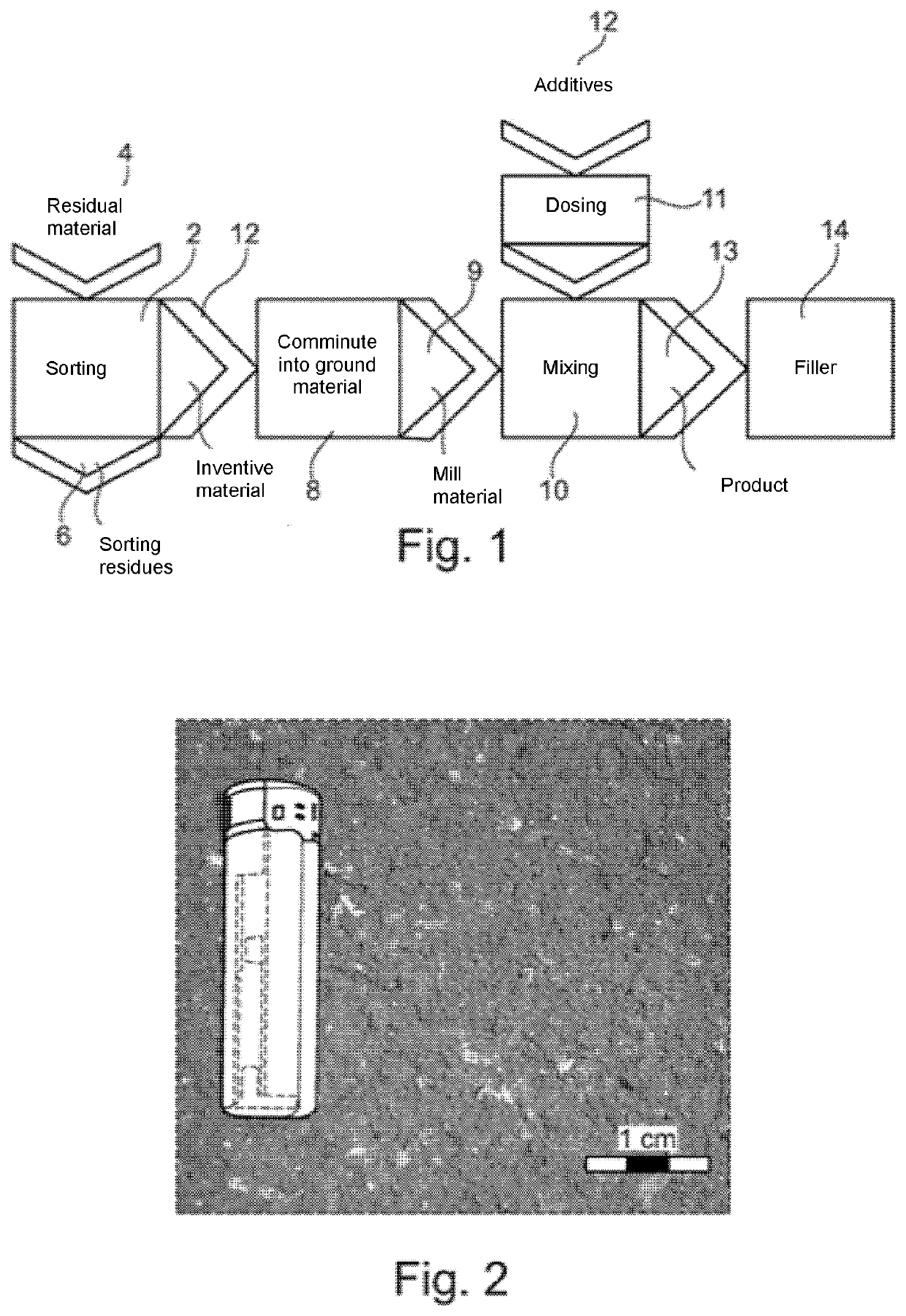Filler Made from Sorted Waste Materials for the Production of Cement-bound Shaped Bodies
a waste material and cement-bound technology, applied in the direction of sustainable waste treatment, manufacturing tools, solid waste management, etc., can solve the problem of valueable raw materials
- Summary
- Abstract
- Description
- Claims
- Application Information
AI Technical Summary
Benefits of technology
Problems solved by technology
Method used
Image
Examples
Embodiment Construction
lass="d_n">[0045]FIG. 1 shows, in the form of a block flow diagram, an embodiment of the process for producing a filler according to the invention.
[0046]In a first step 2, residual materials 4 consisting of 20% paper, cardboard, cardboard packaging, 40% plastics, 20% inert material, 15% textiles and 5% wood are sorted, whereby sorting residues 6 are separated out.
[0047]In step 5, the residual materials 4 are transferred to a cross-flow screen flaker, where they are comminuted into ground material in step 8, with the maximum expansion of the particles of the ground material preferably being less than 4 mm in 80% by mass and less than 10 mm in 98% by mass.
[0048]The ground material 9 from step 8 is then mixed in a conventional mixer in step 10 with solid aluminium sulphate (Al2(SO4)3-xH2O) dosed in step 11 and calcium oxide as additives 12. The aluminium sulphate used is anhydrous (x=0) or has the water content typically found in commerce (x>0).
[0049]The mass ratio of aluminium sulphat...
PUM
| Property | Measurement | Unit |
|---|---|---|
| Fraction | aaaaa | aaaaa |
| Fraction | aaaaa | aaaaa |
| Fraction | aaaaa | aaaaa |
Abstract
Description
Claims
Application Information
 Login to View More
Login to View More - R&D
- Intellectual Property
- Life Sciences
- Materials
- Tech Scout
- Unparalleled Data Quality
- Higher Quality Content
- 60% Fewer Hallucinations
Browse by: Latest US Patents, China's latest patents, Technical Efficacy Thesaurus, Application Domain, Technology Topic, Popular Technical Reports.
© 2025 PatSnap. All rights reserved.Legal|Privacy policy|Modern Slavery Act Transparency Statement|Sitemap|About US| Contact US: help@patsnap.com

